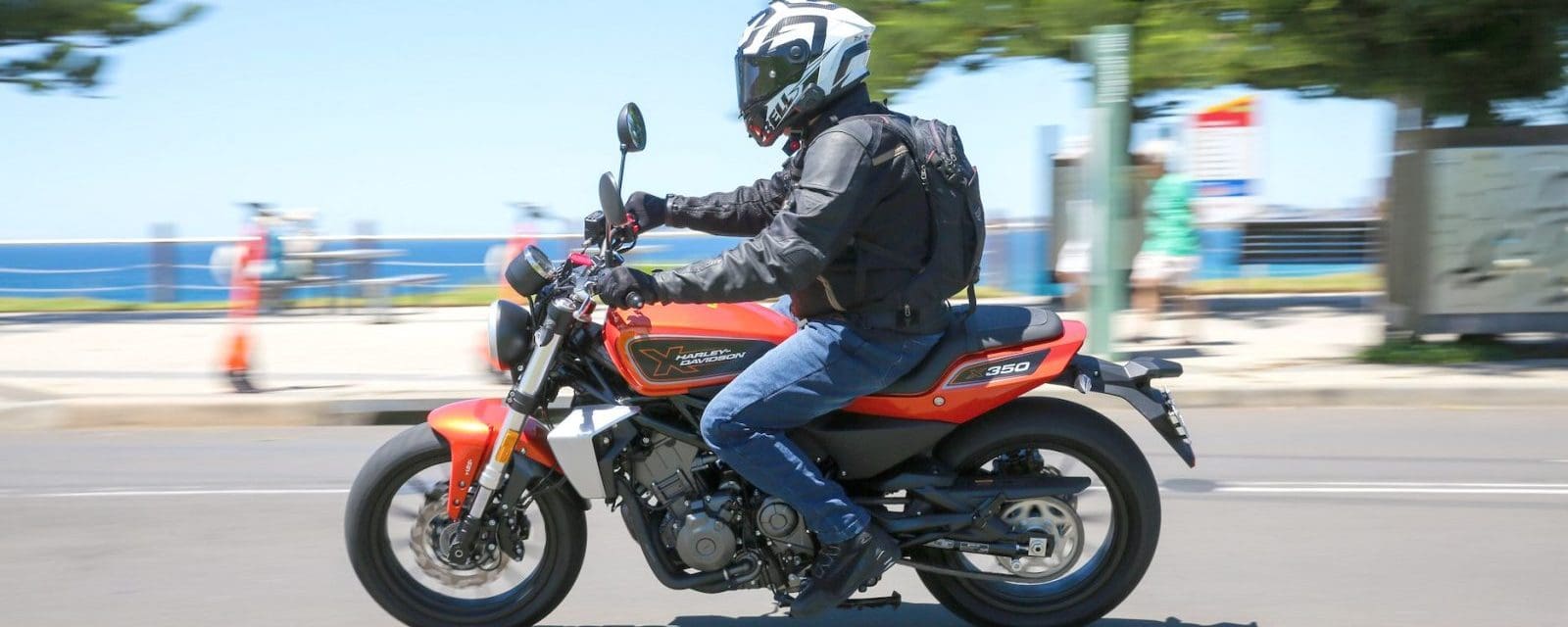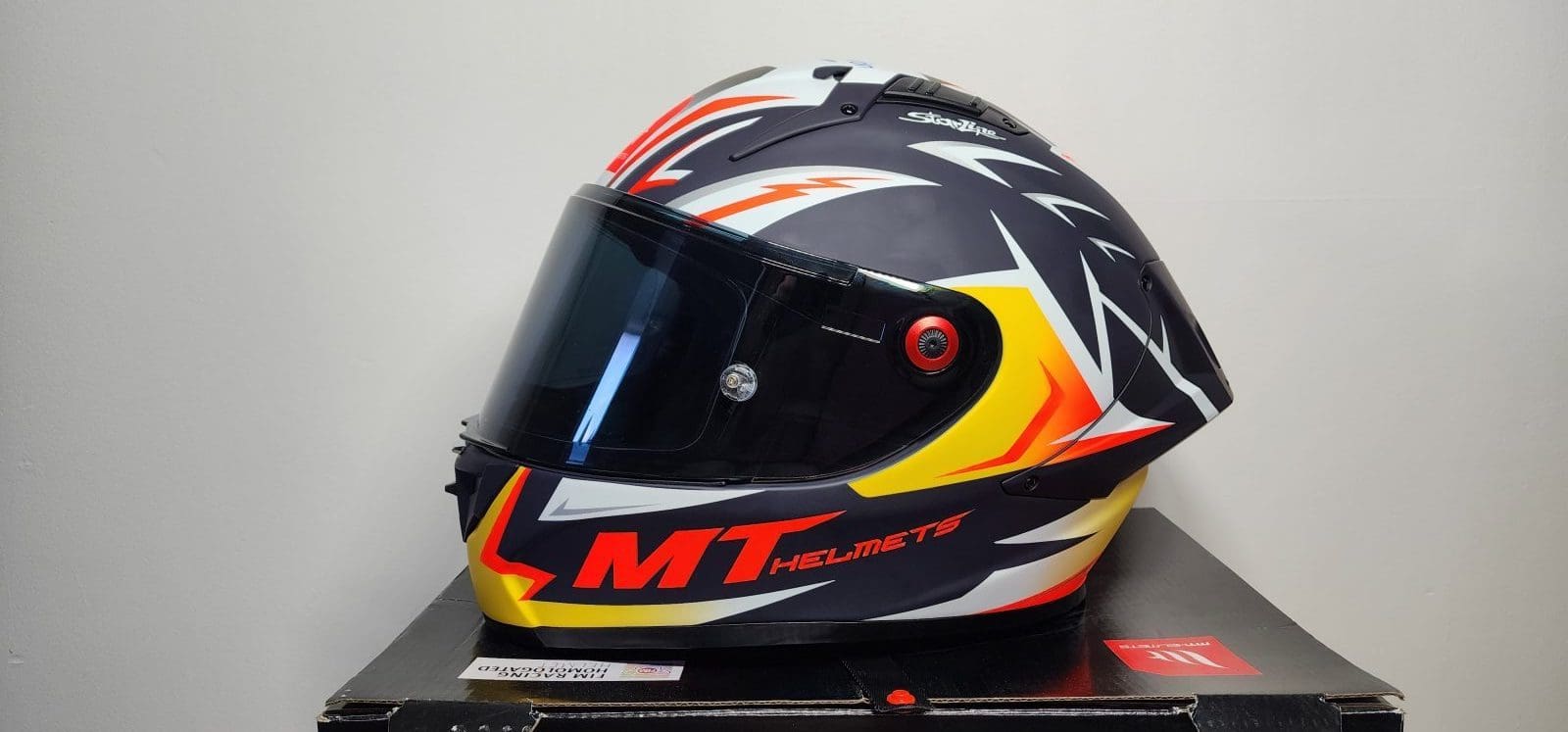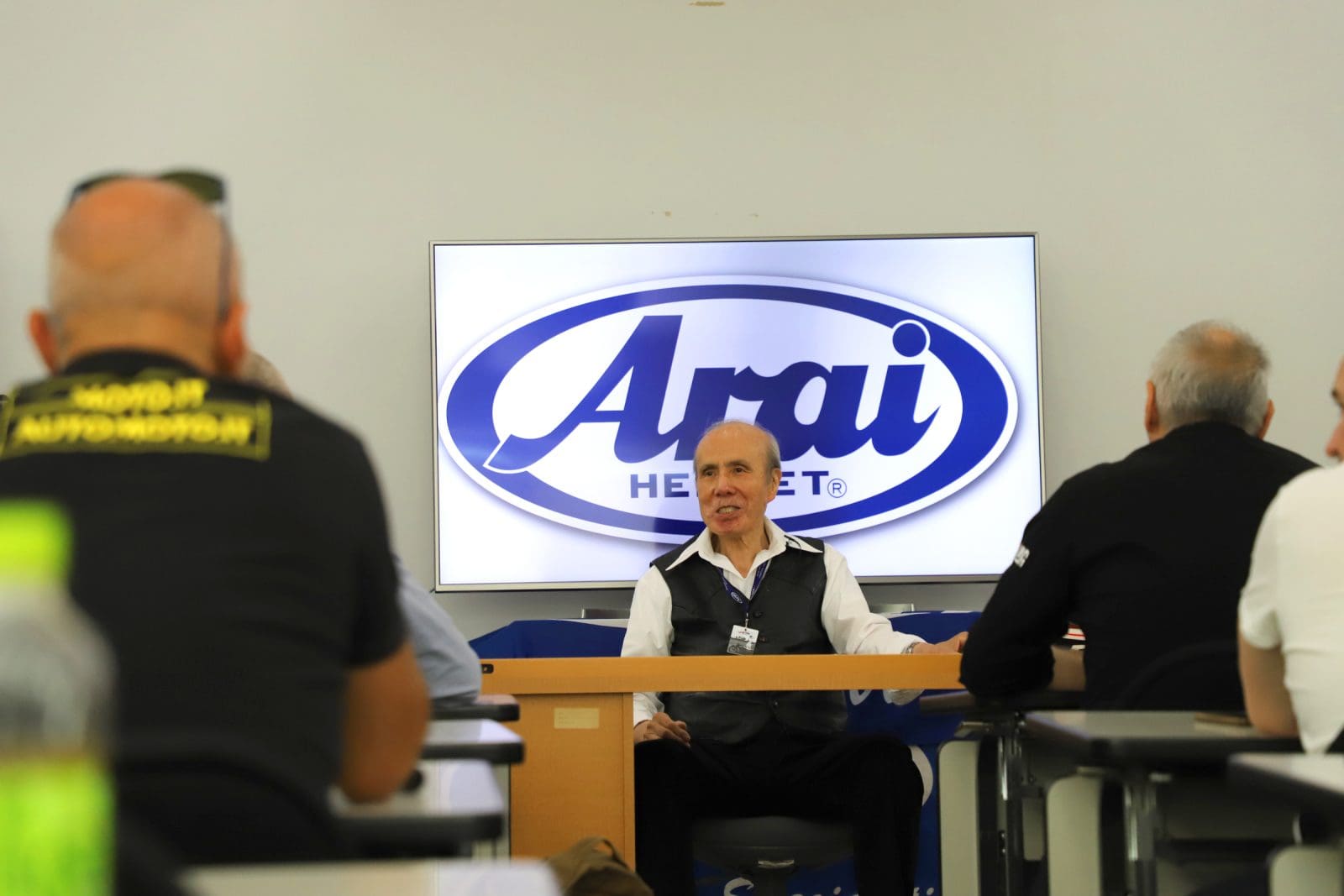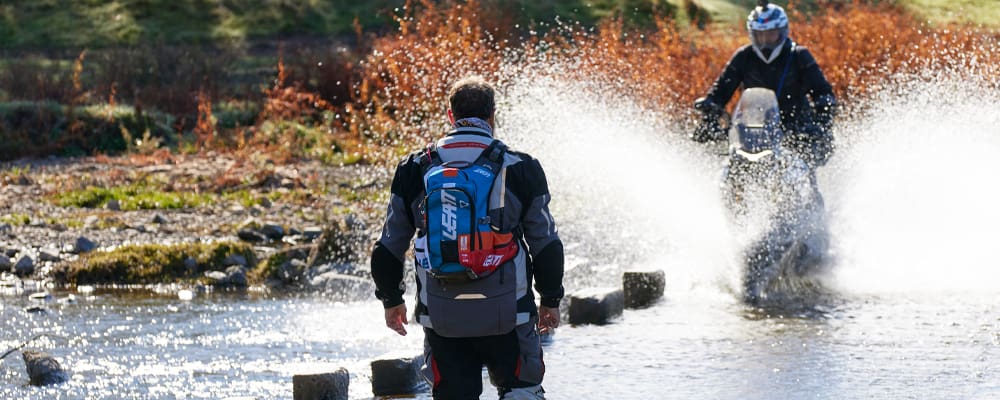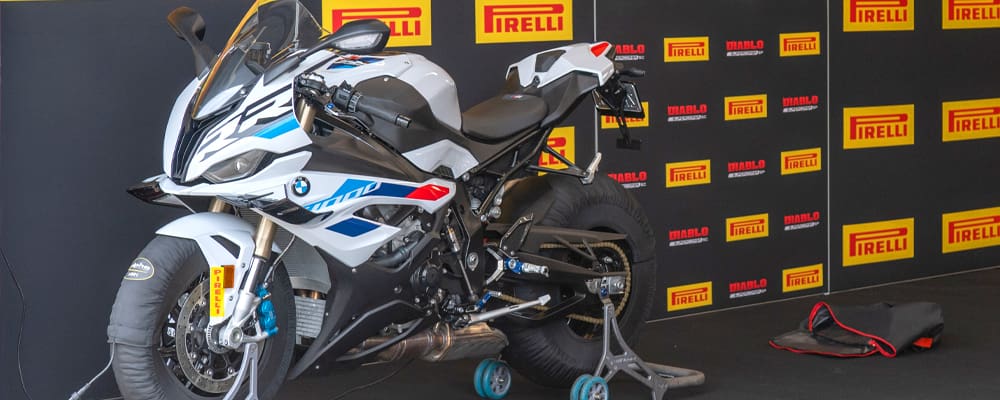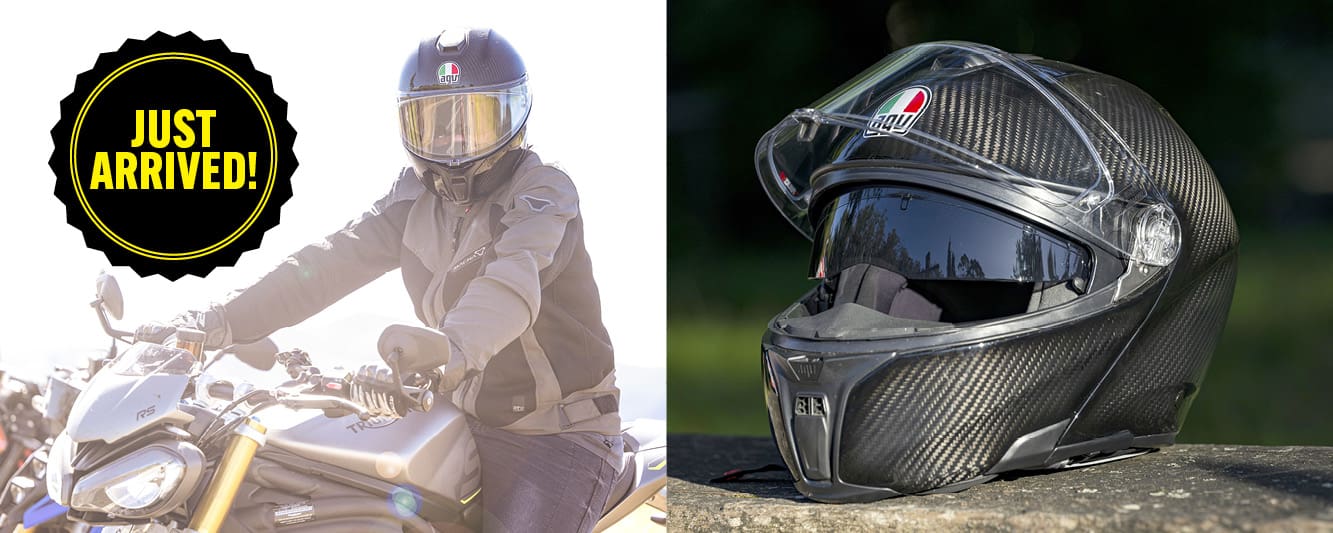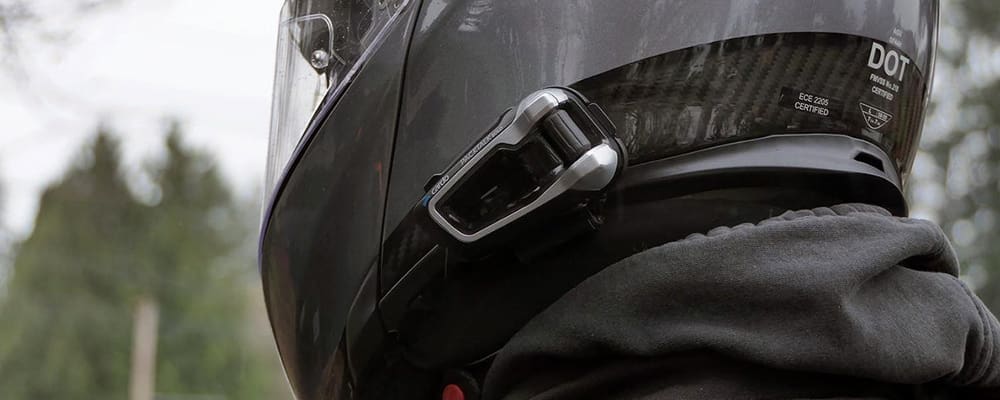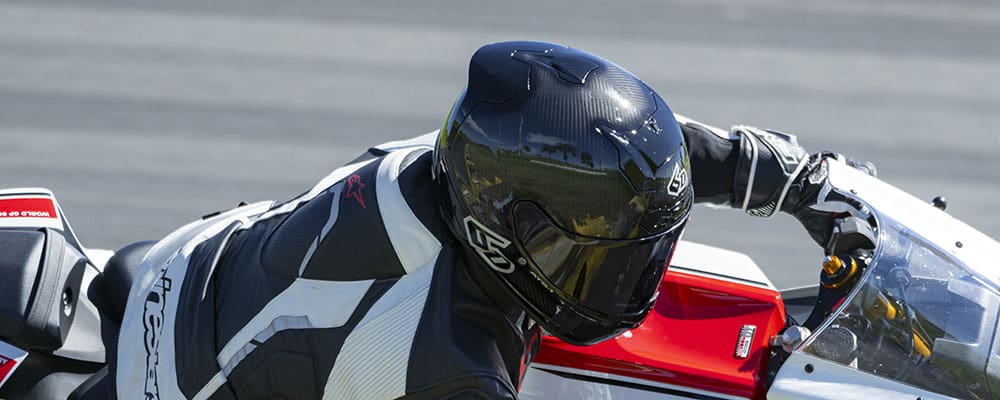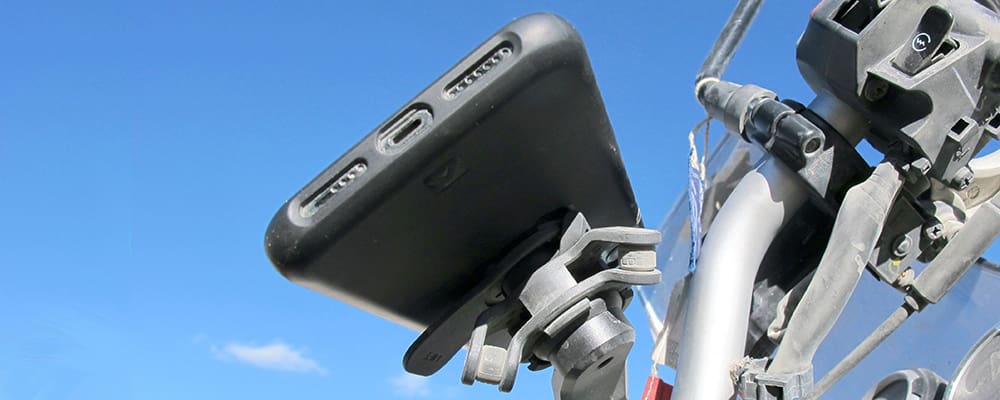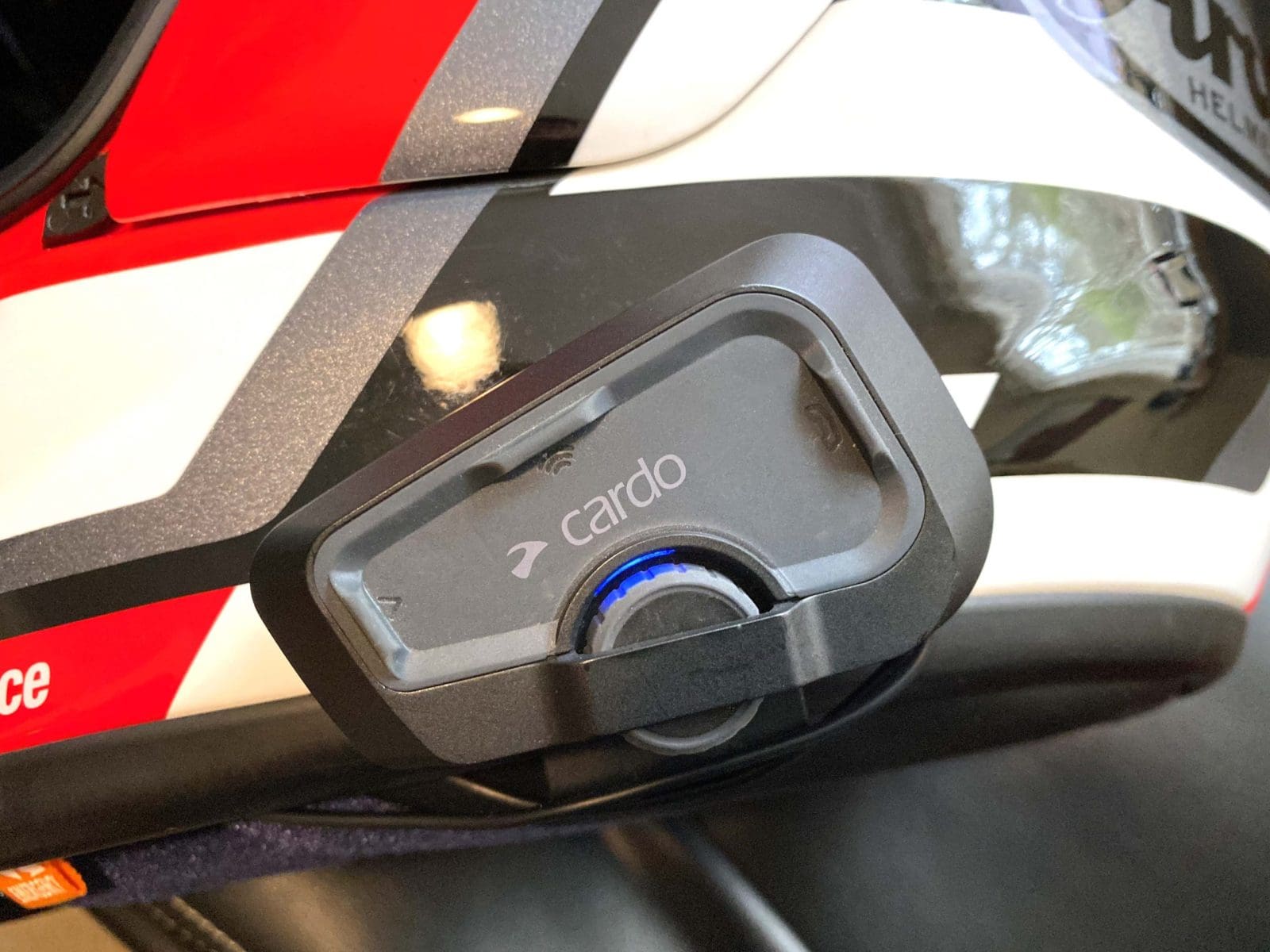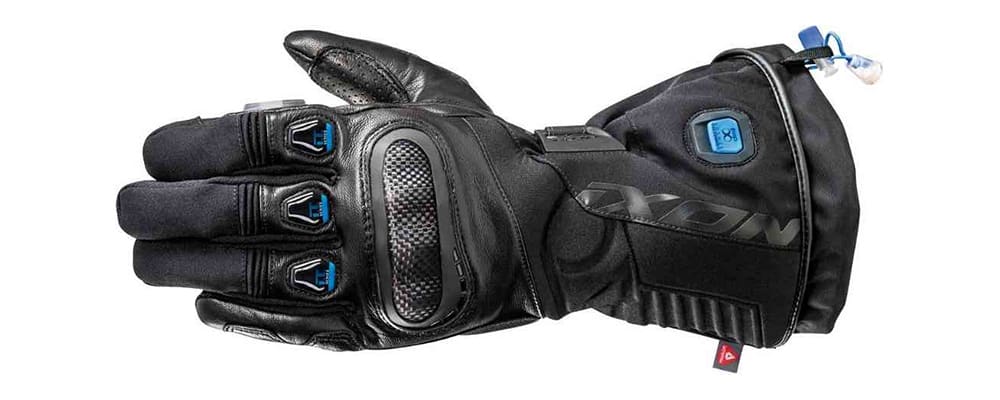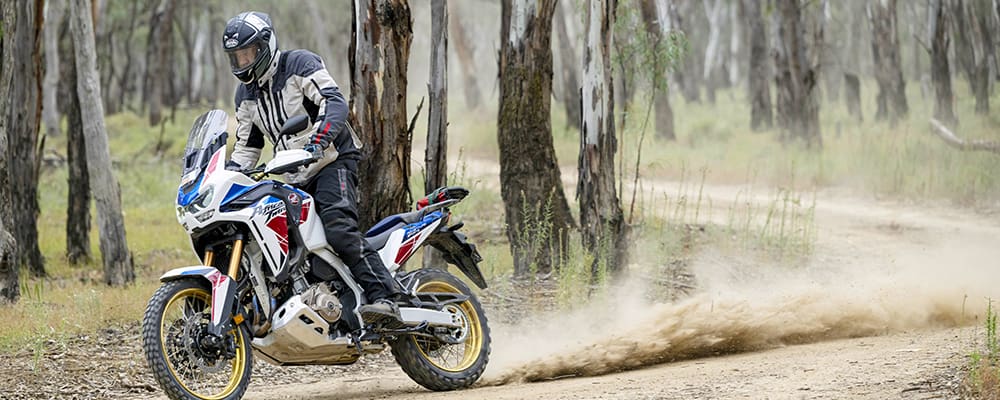The new Continental Road Attack 3 tyre is visually quite a step forward from the Road Attack 2 EVO it replaces. A new angular tread pattern, while understated, has borrowed heavily from the Sport Attack 3 tyre which Conti released last year, but with additional grooves for channeling more water. Its appearance is aesthetically more attractive than the curvy RA2 EVO, but how does it perform?
While different manufacturers may produce sport touring tyres with unique characteristics, it’s becoming increasingly difficult to find a top brand sport touring tyre that doesn’t offer impressive sport-style performance. What customers want these days is longevity and wet grip, two areas where Conti has made the biggest improvements with its new Road Attack 3 tyre.
For the recent world launch of the RA3 at Mallorca, Spain, a tasty selection of test bikes were fitted with the new hoops – naked, adventure, touring, sport touring and super moto – it was evident Conti had confidence its new tyre was the consummate all-rounder. My plan was to sample three very familiar bikes from different categories to get a rounded appraisal. While looking over the bikes in a cold and windy hotel car park, it was clear the tyre’s treads were particularly deep and Conti confirmed the front has 4.5mm of tread, and the rear 7.2mm, suggesting a decent life span.
Also notable was the finish of the tyres – despite being new, they all looked as though they had been pre-scrubbed. Cue Conti’s Traction Skin technology – the RA3 is finished with a micro-rough tread surface which gives the appearance of a roaded tyre, and replaces the slippery looking (and feeling) surface of a traditional tyre caused by release agents during manufacture. The Traction Skin technology has virtually eliminated the need to scrub in the tyre, a clear bonus for us consumers.
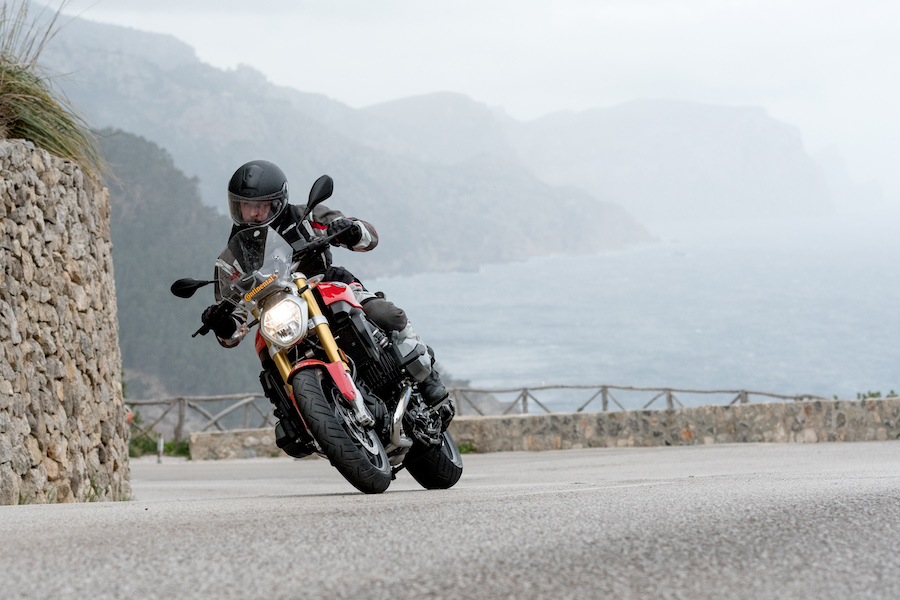
Real World Road Test
A 200km loop of differing road types and surfaces from sea level up to 1500m in the Tramuntana Mountains looked like a good way to get a feel for the tyre’s performance.
Low air and surface temperatures met the first of our sampler bikes, a BMW S1000XR. It’s always best to start the day on a bike with heated grips when the temperature’s in single digits…
On minor bumpy roads to the nearest two lane highway the XR felt balanced and composed over irritating ripples and tar lines without wandering from the chosen line. A few badly cambered roundabouts provided the first opportunity to agitate the rear. A good handful of throttle only resulted in compressing the shock and launching us at the next straight. Fairly impressively, the traction control couldn’t be roused on cold, well-worn tarmac.
Nothing much to report at a steady 120km/h with a fair crosswind either. The ride is comfortable and quiet with no negative reaction to me swerving from the painted rumble strip next to the hard shoulder to grooves left by trucks in the nearside lane, and back again.
With the straight section complete, the climb from Pollenca to Coll Dels Reis up in the mountains began, allowing some rhythm to build up as the temperature began to drop even further. At a quick, appropriate pace the XR rolled from one shoulder of the tyre to the other with ease. The faster the pace, the more the front end dug in through the corners and seemingly, no amount of line changes could upset the Contis.
Following a mid-morning coffee stop and a change to an unattended BMW R1200RT, I set off for a more leisurely comparison – but with the tyres now shouldering over 350kg. Plenty of switchbacks before lunch down on the coast, gave them a bit of a workout. Despite the bike’s bulk and weight, it remained surprisingly nimble and able to turn quickly through the snaking and undulating downhill stretches between the bends. No big squirts of throttle, but very hard, late braking and plenty of trailing brake into the corners kept the RT planted and stable – a testament to a well sorted bike mated to competent rubber.
As you’d expect the RT was comfortable and composed in most situations while transmitting slightly less feedback than the XR. Equally as expected, the heavier duty GT RA3, which has been designed for larger tourers, coped admirably with a fully loaded R1200RT.
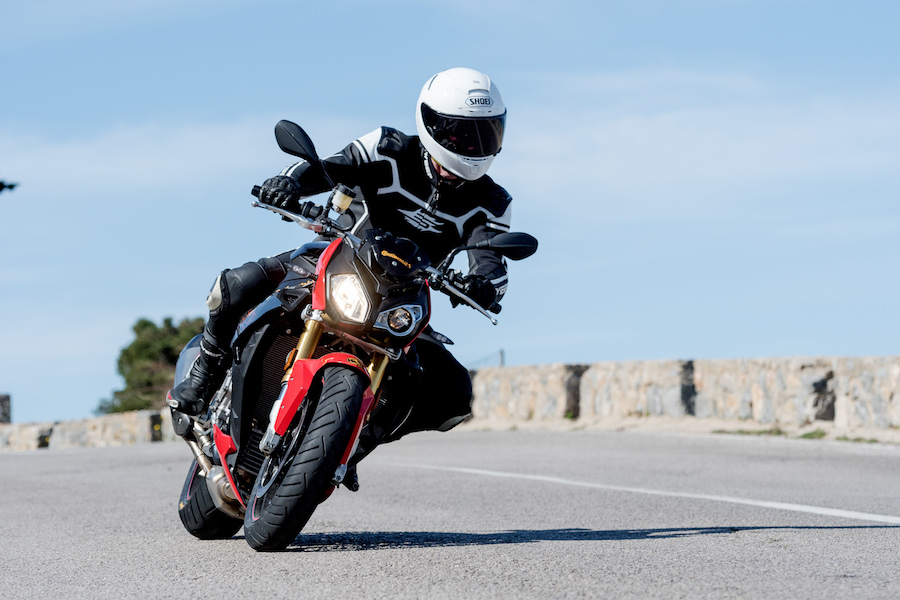
It was down to Yamaha’s MT-09 to provide the naked experience, and round off the last 80km of the test loop. With the ambient temperature now up to 20 degrees and the sun warming the tarmac for a few hours, traction control was disabled and we set off. When you have good tyres without negative
characteristics, it’s quite difficult to concentrate on them for very long, because you have enough trust in the tyres to do their job without attracting attention to themselves.
Admittedly the MT-09 does not have a high horsepower engine, but it was ideal for highlighting the capabilities of the RA3 tyre. Powering out of roundabouts and throwing the bike hard into turns felt fantastic. Holding a tight line, then digging in harder when the curve tightens, before yanking the throttle open can all be done with minimum effort. On only two occasions the rear felt about ready to lose traction, just enough to complain and squirm rather than step out, which just served as a reminder to calm down a bit. Also noticeable was just how much information from the road surface was available. By this time the Yamaha had been punished by several enthusiastic testers, but the rear tyre was showing no particular signs of fatigue.
Riding three very different bikes in dry conditions gave a good feel for the RA3’s capabilities, but it’s only half a test. The plan at Gassit HQ is to hunt out some wet roads, or even a dry race track, for some perspective. Having sampled the tyres on a naked lunatic, rapid adventurer and rotund tourer we can only report on the tyre’s dry surface performance, but as far as overall manners are concerned, the RA3 is an excellent road tyre.

Getting a grip
If you are one of those who threw a set of Continental’s popular Road Attack Evo II tyres onto their sport-tourer, there’s a chance you were impressed by all areas of its performance, except maybe for a lack of feel and grip in wet conditions. The team from Continental were happy to admit to the wet weather limitation of the Evo II tyre, and explained the new RA3 tyre has seen improvements in these areas.
A new tread pattern has a drainage groove with lateral channels to direct water away from the surface for increased grip in wet conditions. At the front, the channels run across the face of the tyre to maximise water dispersion when upright and during braking or cornering. On the rear, a wider slick centre section helps with acceleration and mileage, while a chunkier side-block design improves lean-angle grip. Despite the aggressive-looking tread pattern, there’s no walking sensation during high-speed cornering in the dry, even at peg-scraping lean angles. Continental claims that despite the deep grooves, wear remains even across the face of the tyre.
In an effort to maximise grip on cold and frosty mornings, Conti has improved warm-up time with new compound technology that includes the addition of silica to the tread compound. These features are key to what Continental calls Grip Limit Feedback, designed to give the rider a better feel for what the tyres are doing in all situations, especially at the limits of grip.

Key points
Multi-Grip
Seamless transition between the softer compound on the side of the tyre to the harder compound centre for more consistent feel.
Rain Grip
A balance between Carbon black for maximum dry grip and fast warmup, and Silica for increased durability and wet weather grip.
Traction Skin
No greasy release agents on the tyre leaves the tread surface dry and tactile for a fast and safe break-in period. Continental refers to it as Ready to Ride!
Endless Zero degree belt construction
Continental’s patented system provides an agile feel at tip-in, increased overall stability under load, and offers a high degree of feedback.
Innovative Tread
Groove technology for better wear, increased wet-weather drainage, higher stability, shorter braking distances and more efficient acceleration.
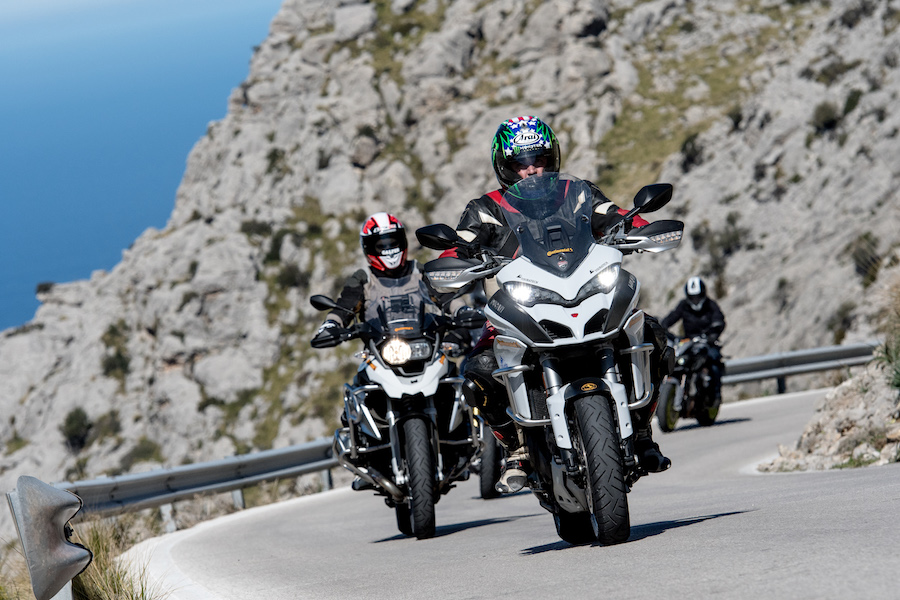
Spidey senses
It just wouldn’t be a tyre test without the infamous Spider Chart – so here it is. While it would be easy for manufacturers to inflate their data for a good-looking chart, doing so would quickly earn the wrath and scorn of competitors. So while we can’t substantiate Continental’s performance claims, we accept them in good faith.
The overall performance of the Road Attack 3 tyre, when compared to the Evo II it replaces, has been increased through a series of small gains rather than a huge leap forward in one area.
The age-old claim of increased durability again made an appearance, with Continental’s figures suggesting you will get 10 per cent additional mileage out of the Road Attack 3. Asking how many kilometres are in 10 per cent is like asking the length of a piece of string, but the 4.5mm of tread at the front and 7.2mm at the rear is as good an indicator of longevity as anything.
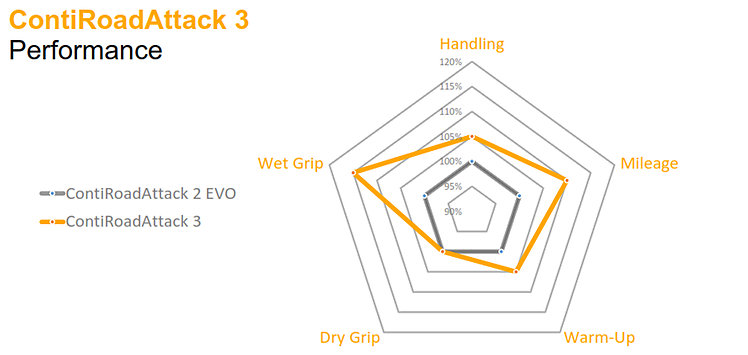
One compound, not three
As soon as the word ‘sport’ is mentioned in relation to a new tyre, ‘multi-compound’ is sure to follow. Harder compounds down the centre assist with durability, while softer compounds on the shoulders provide cornering grip. Going against that trend, the Continental Road Attack 3 tyre is constructed from a seamless single compound which transitions from optimum-grip soft rubber on the shoulders to a harder high-durability rubber in the centre. The transition from hard centre to soft shoulder in a single compound is achieved using varying temperatures during the curing process. Continental calls it Multi-Grip tread compound technology. Using a transitional single-compound over a tri-compound tread is designed to provide a more consistent feel during cornering when the load on a tyre transfers from the centre to the shoulder and back again.
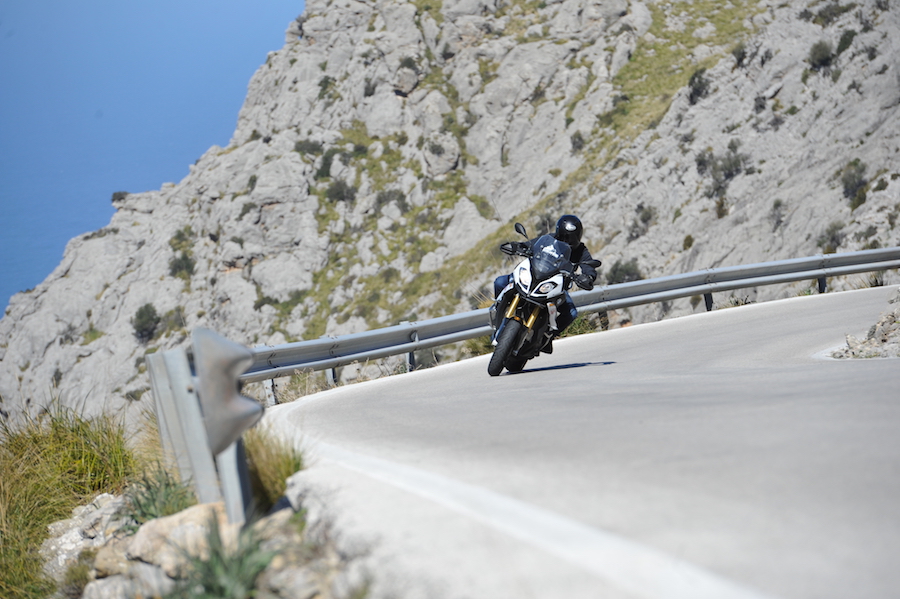
REPORT: Simon Bowen PHOTOGRAPHY: Continental
